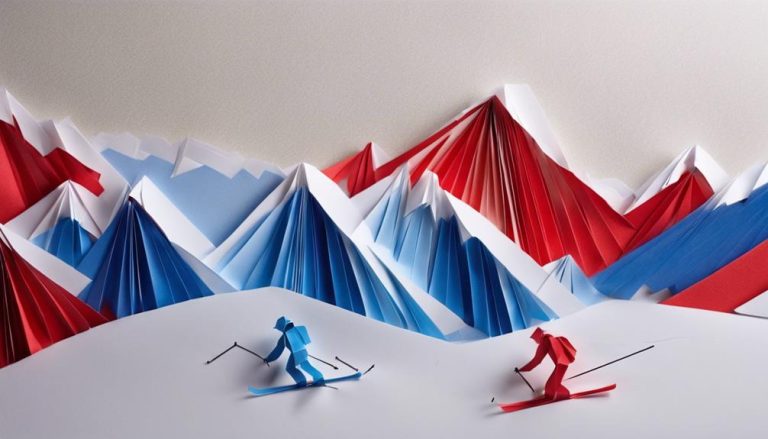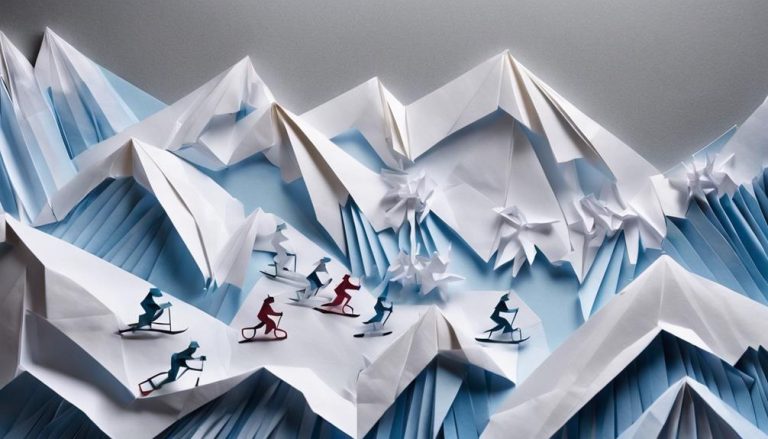General Rules of Snow Polo
When it comes to snow polo, you might be surprised at the level of strategy and skill involved in this unique sport. From the vast field dimensions to the specialized equipment required, there are various aspects that contribute to the game's excitement. Understanding the team composition and player conduct can significantly impact the outcome of a match. Stay tuned as we navigate through the general rules of snow polo, shedding light on the intricacies that make this sport a thrilling spectacle.
Field Dimensions
When setting up a snow polo field, it is crucial to adhere to specific dimensions to ensure a fair and competitive game. The dimensions of the field are vital for maintaining the integrity of the sport and providing a level playing field for all participants. Spectator seating plays a significant role in the layout of the field, as it must be strategically placed to offer optimal viewing angles without interfering with the game.
Weather conditions also play a pivotal role in determining the field dimensions for snow polo. Snow consistency, wind direction, and temperature are all factors that need to be considered when setting up the field. The dimensions must be adjusted accordingly to ensure that the playing surface is safe and suitable for the players and their horses.
Team Composition
When it comes to team composition in snow polo, understanding player positions and substitution rules is crucial for success on the field. Proper allocation of players based on their strengths and skills can significantly impact the team's performance. Substitutions need to be strategic and well-timed to maintain a competitive edge throughout the match.
Player Positions
Typically, a snow polo team consists of three players per side, each with designated positions that strategically contribute to the team's overall performance on the field. Player positions in snow polo are crucial for executing strategy tactics effectively. The Number 1 player, also known as the forward, requires strong offensive skills and precision to score goals. The Number 2 player, or the midfielder, plays a pivotal role in both offensive and defensive plays, requiring versatility and excellent game dynamics understanding. Lastly, the Number 3 player, the defender, focuses on strong defensive skills and team communication to protect the goal and support teammates. Effective coordination between these positions is essential for a successful snow polo team, emphasizing player skills, strategy tactics, and cohesive game dynamics.
Substitution Rules
Have you ever wondered how snow polo teams manage their team composition through substitution rules? When it comes to player eligibility and rotation in snow polo, strategic and tactical substitutions play a crucial role in maintaining a competitive edge. Here are some insights into how teams handle substitutions:
- Player Eligibility: Teams must ensure that only eligible players are substituted in and out of the game.
- Rotation: Coaches strategically rotate players to maintain freshness and adapt to the game's evolving dynamics.
- Strategic Substitutions: Teams make calculated substitutions to exploit the opponent's weaknesses or bolster their own strengths.
- Tactical Substitutions: Changes are made based on specific tactics or game situations to maximize performance and efficiency on the snow polo field.
Chukker Duration
When it comes to the duration of each chukker in snow polo, precision is key. Understanding the time allocated for each chukker, the breaks between chukkers, and any overtime rules is crucial for players and spectators alike. These nuances can greatly impact the flow and outcome of a snow polo match.
Time for Each Chukker
The duration of each chukker in snow polo matches is crucial for maintaining the pace and intensity of the game. Understanding the timing of each chukker is key for effective chukker strategies and time management. Here's a breakdown to give you a glimpse into the time allocation during a chukker:
- Chukker Length: Typically, a chukker lasts for 7.5 minutes, ensuring a balance between quick gameplay and strategic maneuvers.
- Halftime: A 10-minute halftime allows players to rest, hydrate, and plan tactics, crucial for chukker intensity and player stamina.
- Timeouts: Teams can call one 30-second timeout per chukker, strategically used for regrouping or changing tactics.
- Overtime: In case of a tie, a sudden-death overtime chukker may be played to determine the winner, adding an extra layer of excitement.
Understanding these time aspects elevates your grasp of snow polo dynamics.
Break Between Chukkers
Understanding the importance of managing the break between chukkers in snow polo is essential for optimizing player performance and maintaining the flow of the game. The break between chukkers is not just a time for players to rest; it is a strategic interlude where teams can regroup, adjust tactics, and assess their opponents. However, it is crucial to balance this with considerations for spectator entertainment and refreshment options. Furthermore, during these breaks, polo pony care is of utmost importance. Proper hydration, cooling down, and monitoring the ponies' well-being are essential. Training techniques such as controlled exercises and stretching can be incorporated during the break to ensure the ponies are ready for the next chukker, enhancing overall performance and longevity.
Overtime Rules if Any
To ensure a fair and structured conclusion to a snow polo match, overtime rules are implemented to determine the chukker duration for any tied games. In snow polo, when a game is tied at the end of regulation time, the following overtime rules come into play:
- Extra Time: Additional chukkers may be added to break the tie, with each chukker typically lasting 7 minutes.
- Sudden Death: If the score remains tied after the extra time, a sudden death chukker is played where the first team to score wins.
- Tiebreaker Rules: In some cases, penalty shootouts may be used as a tiebreaker to determine the winner.
- Fair Play: These overtime rules ensure a thrilling and decisive end to the match while maintaining the integrity of the sport.
Equipment Requirements
When preparing for a game of snow polo, it is crucial to ensure that your equipment meets the specific requirements set forth for this unique and exhilarating sport. Polo mallets and gear are essential components of a player's arsenal. The mallet, usually made of bamboo or composite materials, is designed to provide the necessary reach and power to strike the ball effectively on the snow-covered field. It is crucial to select a mallet that suits your playing style and preferences to maximize your performance on the icy terrain.
Additionally, considering the snow conditions and safety aspects is paramount when choosing your equipment. Specialized gear, such as snow-appropriate boots with good traction, is vital to prevent slips and falls during the fast-paced game. Ensuring that your attire is warm enough to withstand the cold temperatures while also allowing freedom of movement is key to staying comfortable and focused during play.
Player Conduct
Have you ever wondered what constitutes appropriate player conduct in the dynamic and competitive world of snow polo? Player conduct is crucial not only for maintaining the integrity of the game but also for fostering a respectful and enjoyable environment for all involved. Here are some key points to consider:
- Spectator Etiquette: Players should uphold a level of professionalism on and off the field, respecting the spectators who have come to enjoy the game. Maintaining composure and avoiding excessive displays of emotion is paramount.
- Player Sportsmanship: Good sportsmanship is fundamental in snow polo. Players should exhibit fair play, respect for opponents, and grace in both victory and defeat.
- Umpire Decisions: Players must accept the decisions made by the umpires without dispute. Challenging an umpire's call can lead to penalties and disrupt the flow of the game.
- Player Interactions: Respectful interactions between players are essential. Avoiding unsportsmanlike behavior such as taunting or aggressive actions towards opponents is key to upholding the spirit of the game.
Scoring System
Exploring the intricacies of the scoring system in snow polo reveals the strategic nuances that define this fast-paced and thrilling sport. In snow polo, scoring is not just about hitting the ball into the goal; it involves a combination of strategy tactics, player statistics, weather conditions, and game intensity. Understanding how these elements interact is key to mastering the scoring system in this dynamic sport.
To excel in snow polo, players must adapt their strategies based on various factors such as the snow quality, visibility, and wind speed. These weather conditions can significantly impact the game, requiring players to adjust their tactics to navigate the challenges posed by the elements. Additionally, analyzing player statistics can provide valuable insights into scoring patterns and opportunities for improvement.
The scoring system in snow polo is not only about goals but also about the intricate dance of skill, teamwork, and adaptability on the snow-covered field. By delving into the details of scoring, players can enhance their performance and elevate their game to new heights.
Frequently Asked Questions
Are There Any Restrictions on the Type of Horse That Can Be Used in Snow Polo Matches?
In snow polo matches, there may be restrictions on the type of horse used. Various factors like size, agility, and training are considered. Proper polo equipment is essential for safety and performance. Player eligibility and spectator etiquette are also important aspects to acknowledge.
How Does Snow Polo Differ From Traditional Grass Polo in Terms of Gameplay Strategy?
In snow polo, gameplay strategies require precise player positioning to outmaneuver opponents. Team communication is key for coordinated attacks, while defensive tactics aim to protect the goal. Snow adds a thrilling element to the game.
Are There Any Specific Rules Regarding the Use of Mallets in Snow Polo Matches?
When it comes to mallet handling in snow polo, players must ensure their equipment meets safety standards. Proper grip and control are crucial for accurate shots and effective gameplay. Adhering to regulations enhances performance and minimizes risks.
Can Spectators Attend Snow Polo Matches, and if So, Are There Any Specific Guidelines for Their Behavior?
You, the spectator, play a crucial role in the enthralling drama of snow polo matches. Spectator etiquette elevates the experience for all. VIP experiences await those who appreciate the finesse of this exhilarating sport.
Are There Any Special Considerations for Players Regarding Snow Conditions and Weather During Snow Polo Matches?
When it comes to snow polo, players must constantly assess snow conditions for optimal performance. Weather considerations are crucial; wind can affect ball control, and snow quality impacts horse movement. Adaptation and skill in these elements are key to success.






